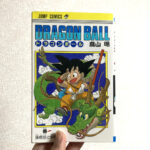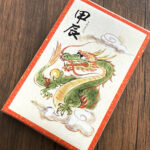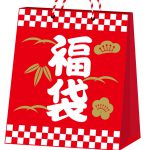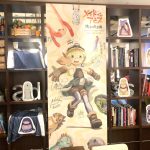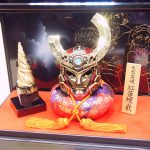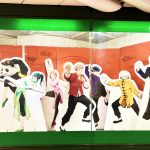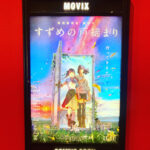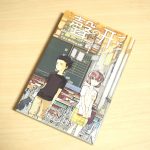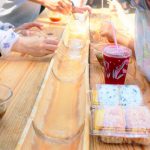Hatsumode New Year Celebration Tokyo 2017 – Visited 5 popular shrines
Happy New Year!!
Thank you very much for reading my article!
This 2017, on 3 January, I visited 5 popular shrines in Tokyo.
New Year’s visit to a shrine is called Hatsumoude in Japan.
To tell you the truth, I rarely go Hatsumoude as it is full of people anywhere.
But this time I wanted to make an article of blog and movie that I visited 5 main shrines in Tokyo.
As I expected, so many people were there.
But it was good as I could feel the start of the New Year.
What is Hatsumode
Hatsumode looks like the event that people has been doing since long time ago.
But the date today’s Hatsumode made by people is since late 1800s of Meiji period.
Before that people did Toshigomori.
Toshigomori is staying in Yashiro or shrine and temple that enshrined one’s local deity from the night of the year-end until the next morning of New Year.
This was done by head of a family praying for a smooth life.
This was the very origin of Hatsumode.
With the time, two styles of visiting shrine coming up, that is, Jyoya Moude and Gantan Moude.
Jyo ya moude is to visit shrine at the night of year-end while Gantan Moude is in the morning of the New Year.
This Gantan moude is also called Ehou Mairi.
Ehou is the direction which holds good luck and the term is from Onmyōdō or way of Yin and Yang.
Mairi or Mairu is visiting in Japanese.
So people visited shrine and temple in the Ehou direction until Edo period.
In Meiji period, between 1868 and 1912, railway developed and that enabled people to access all over Japan.
People came to visit shrine and temple anywhere they like, not paying so much attention to Ehou.
This is the origin of Hatsumode.
Sensouji temple in Asakusa
I was surprised at the number of people when I got to the first gate Kaminari-mon or just got out of the exit of Asakusa station.
There were many police, too.
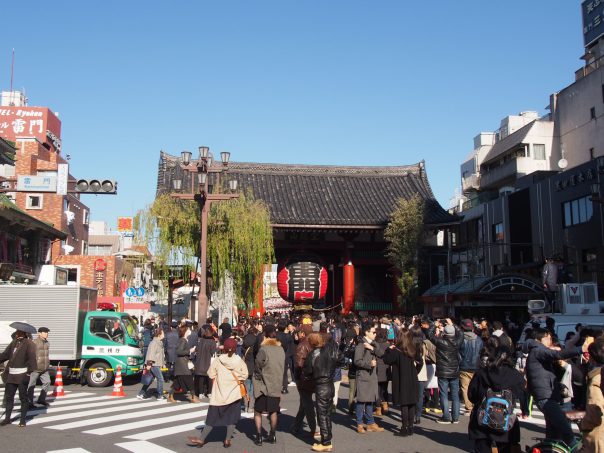

There was a path to the main temple and it was really crowded like this.
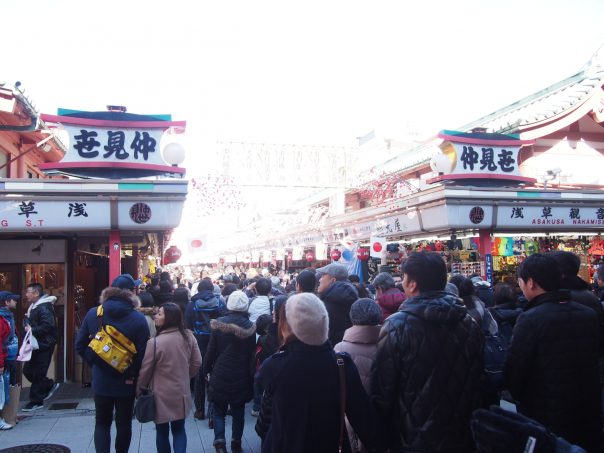
Lined with both sides are shops that sell traditional food, clothes, souvenir.
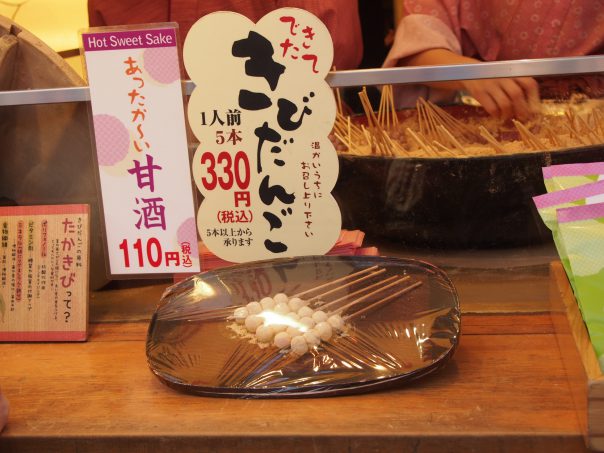
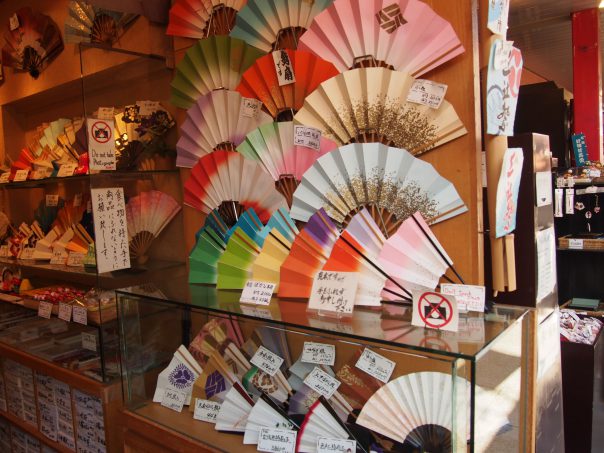
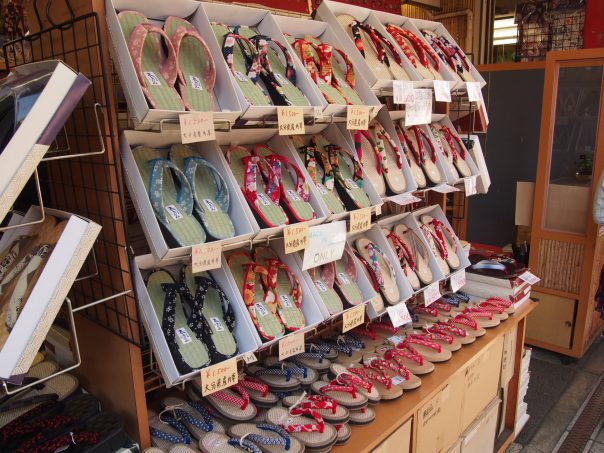 .
.
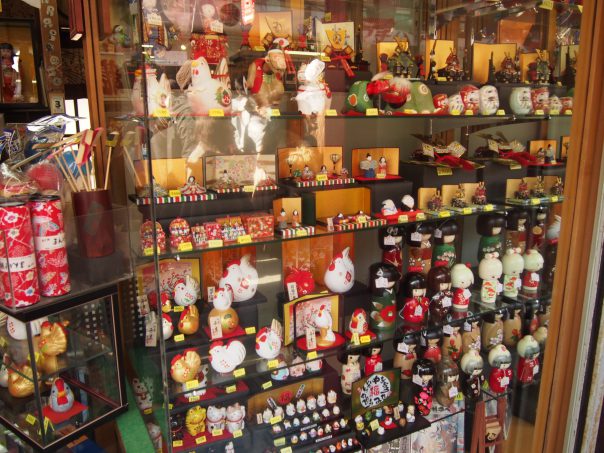
After walking of several hundred meters at very slow pace, I could see Sensou-ji finally.
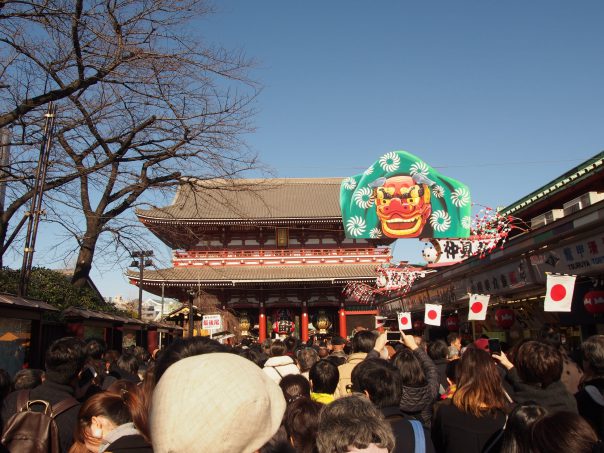
This is the main building of Sensouji.
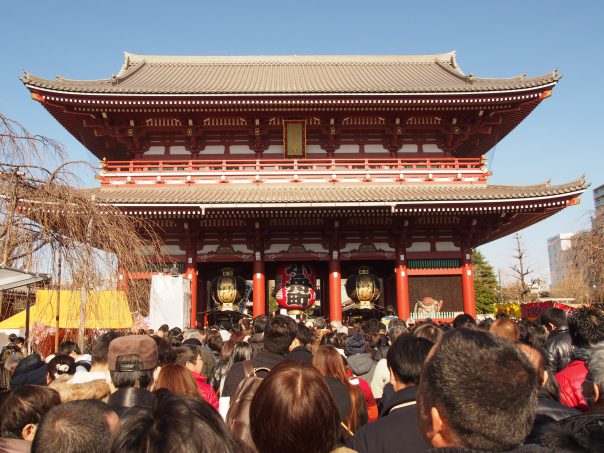
This is really splendid old temple.
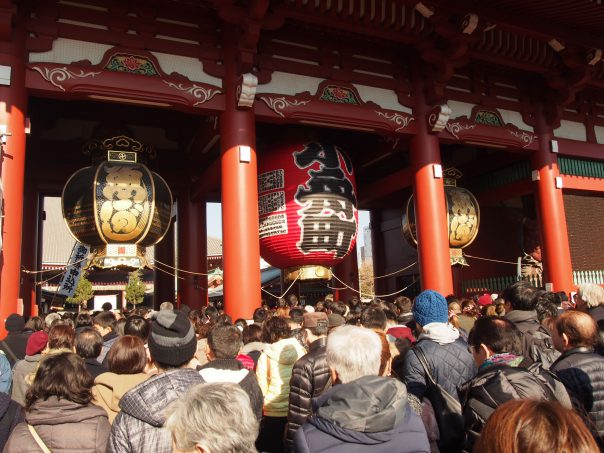
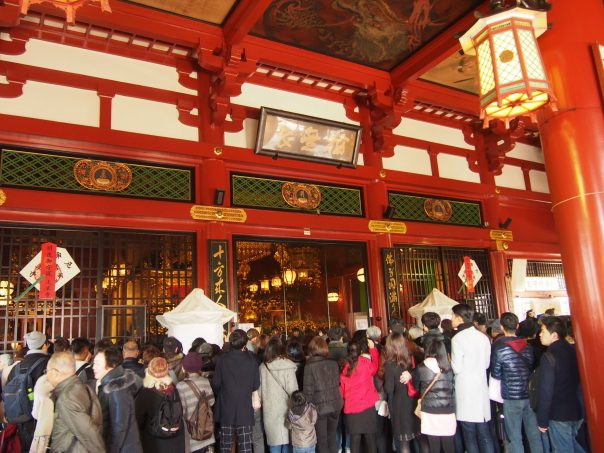
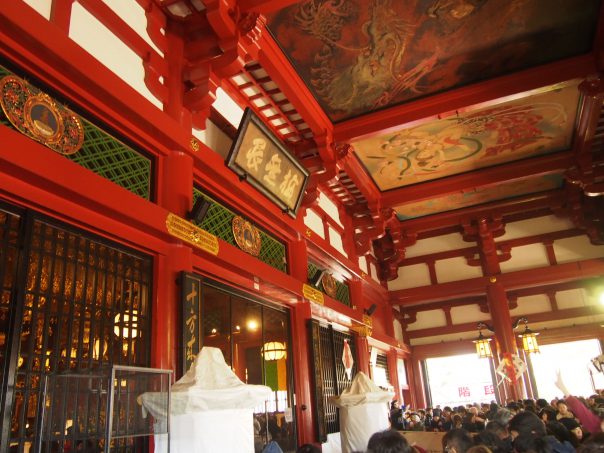

Outside was a kind of Japanese festival.
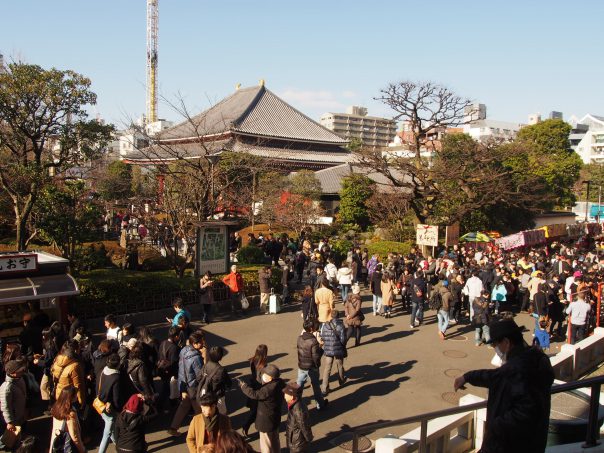
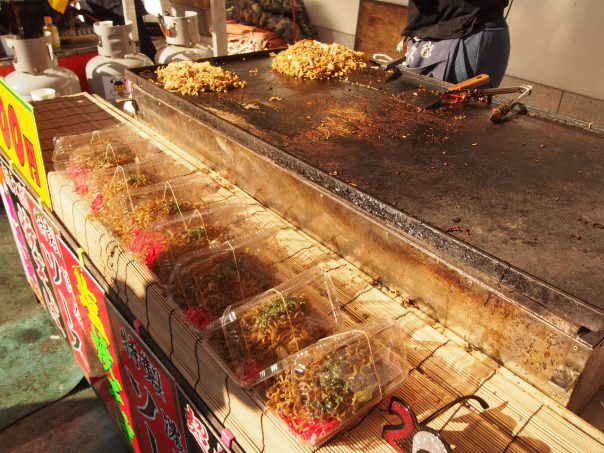
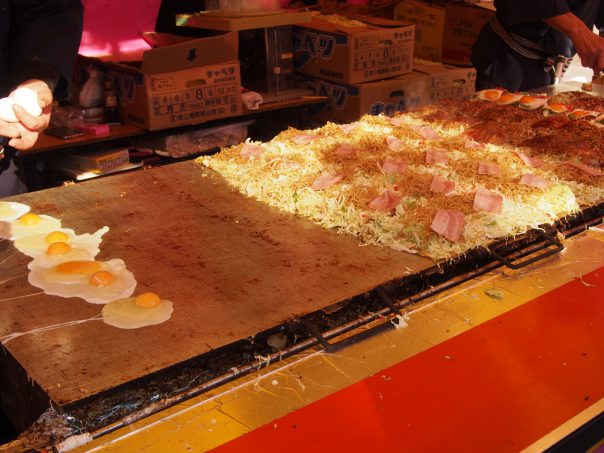
Just going back to Asakusa station I could see Japanese sweet confectioner making Japanese old sweet Kaminariokoshi.
It is my favorite and especially elderly people love it.
It’s sweet and made of made of rice.
I recommend you to try it if you like traditional Japanese sweet.

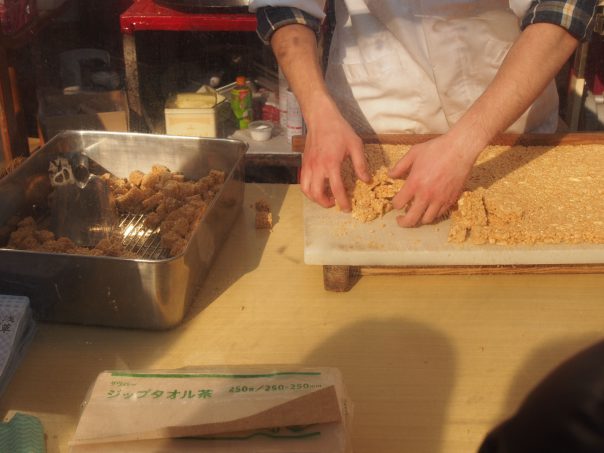
I was really hungry that when I change the train at Ueno station I ate Soba inside station.
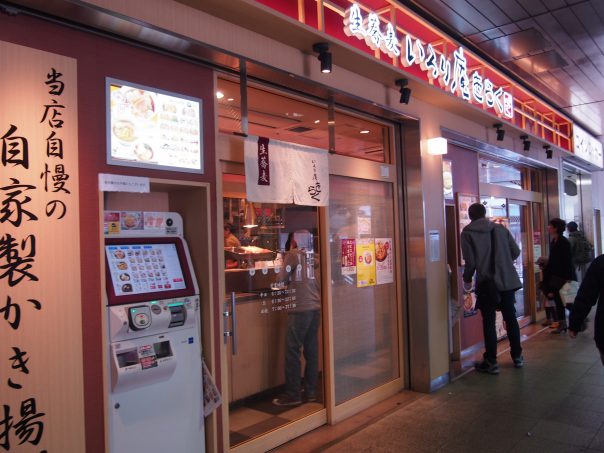
You can eat this Soba for less than 3 dollars.
But this is the cheapest simple soba that if you add Tempura or order other types soba that’ll be 4 or 5 dollars although it is still cheap.
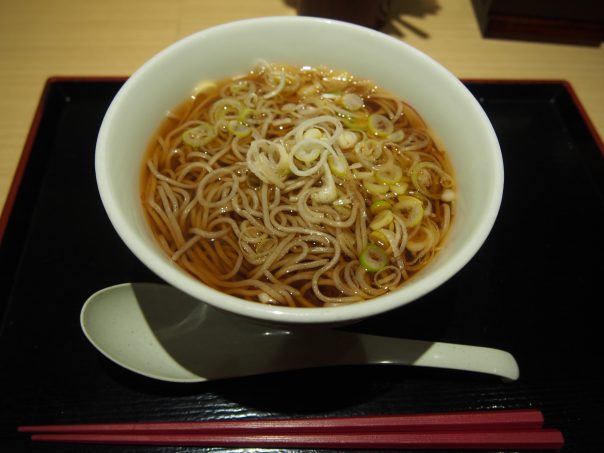
Kanda Myoujin Shrine in Kanda
I was amazed at the long line of people again.
Anyway I lined at the end.
How long I lined but I could see the temple!
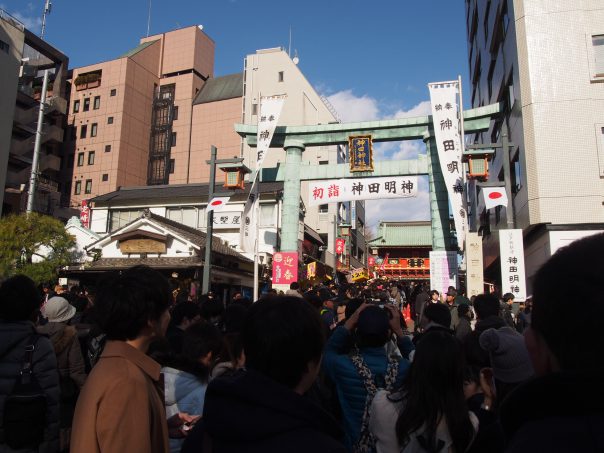
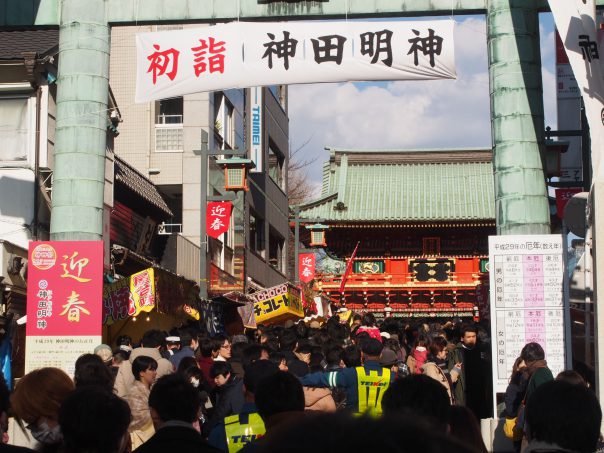
Yes, now I’m really pleased that I fell out of the line.
You might think why leave the line when the temple is within a stone’s throw.
But actually the line I lined up was so long and winding like snake that even if it looks like very close it takes about 1 hour I think to get to the main shrine.
So I left and went to the next shrine.
By the way, I did a part-time 13 years ago near here, I was making soba noodles at the time.
This area Kanda is also famous for Soba, too.
Yasukuni Shrine in Chiyoda
This Yasukuni Shrine often makes the news as this shrine enshrines class-A war criminal, too that every time prime minister visit the place some countries react to it.
So this shrine is a kind of political related shrine.
Anyway I don’t explain details here as it takes so long and it is complicated issue.
First gate was really big.
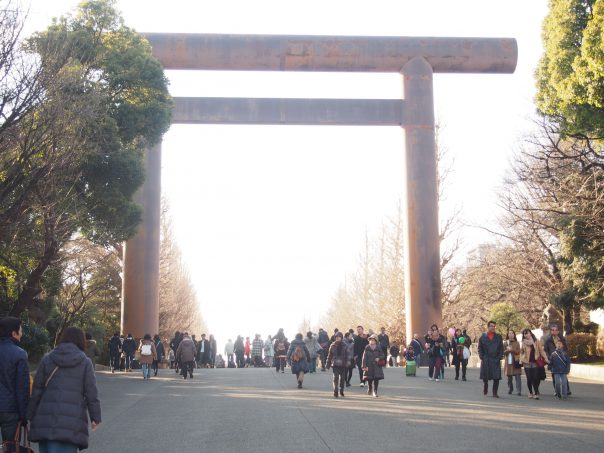
This path is a few hundred meters long and leads to the main shrine.
And got to the shrine.
I didn’t line up this time.

I could see traditional dancing outside.
He was wearing a fox mask and throwing the beans.
I think the action he did such as throwing the beans means drive away bad lucks or evil things and taking good luck for people.
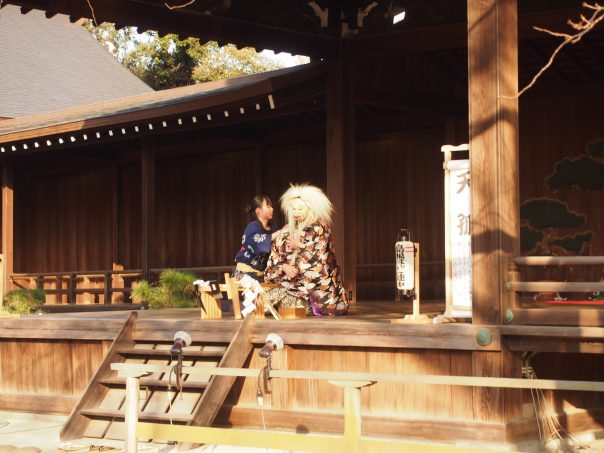
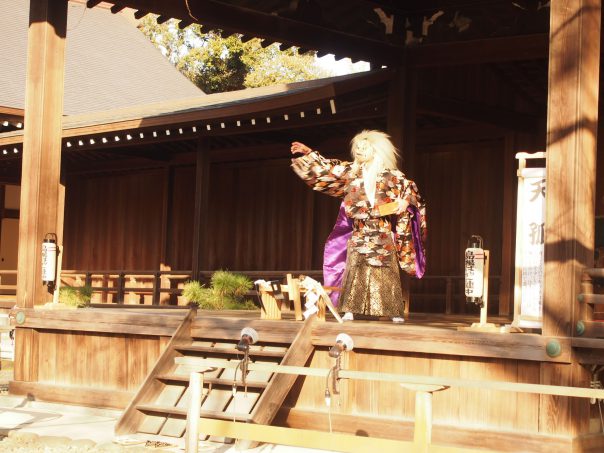
Found Shishimai!
It is also one of the symbolic characters of New Year in Japan.
They say it drives away demon, famine and plague.
You might think why it is biting the head of people?
It is said that it can eat an evil spirit the person gets.
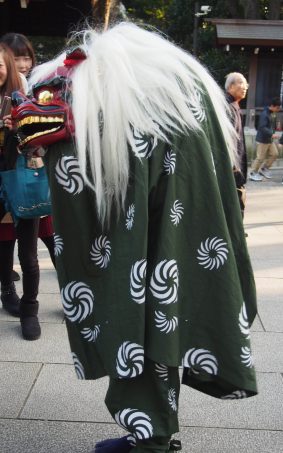
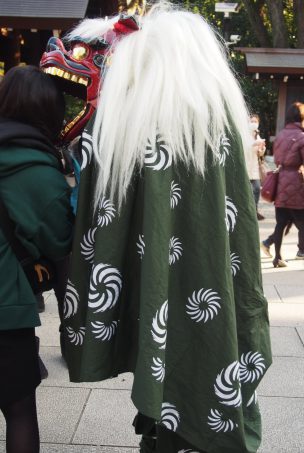
Hie Shrine in Akasaka
This shrine was my first visit and thought really interesting.
By the way this Hie shrine is not the Hie shrine used as a model in movie Your Name.
The Hie Shrine in Your Name is in Gifu Prefecture.
Anyway, what I found interesting was the location.
You need to go up the long steps to the main shrine.
And you can see skyscrapers around this Hie Shrine.
Mixing of Shrine and modern building in the middle of Tokyo, that was interesting to me.
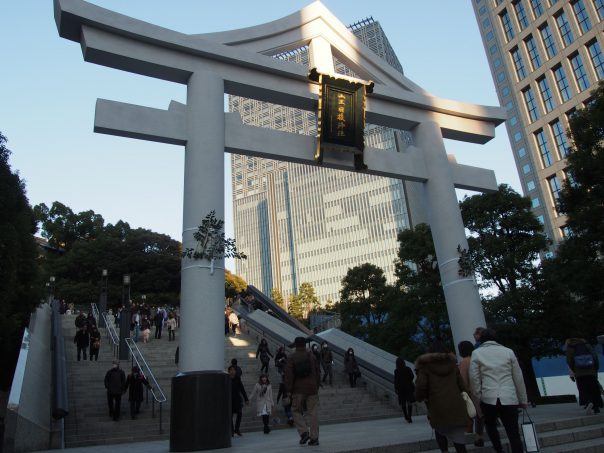
And as I imagined long line continued from the ground to the main shrine up there.
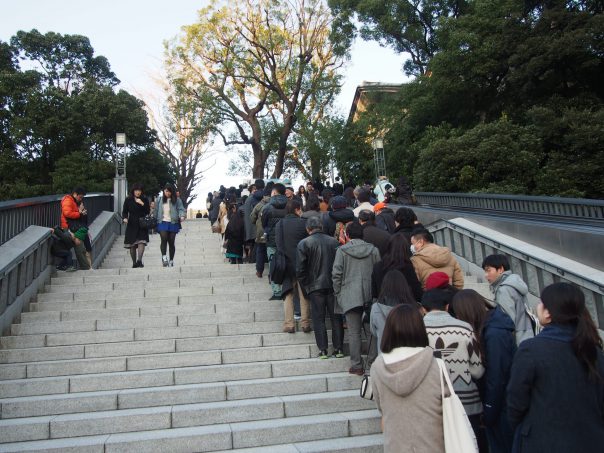
Good thing was I could find escalator next to the steps.
People lining up is for praying but what I want was just taking picture and video that I took short cut of escalator.
Got to the gate of shrine.
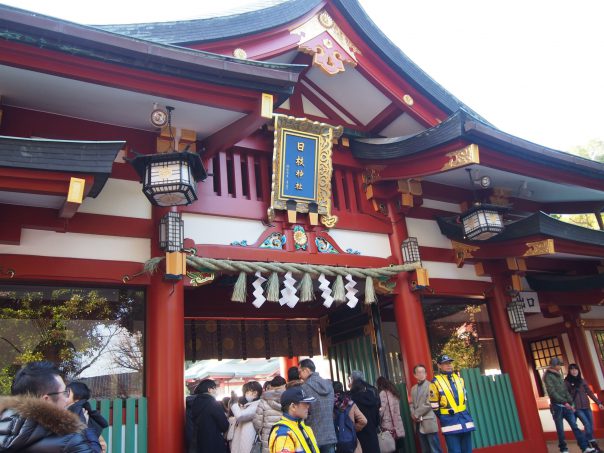
Went inside and could see main shrine.

This Hie Shrine was also splendid shrine.
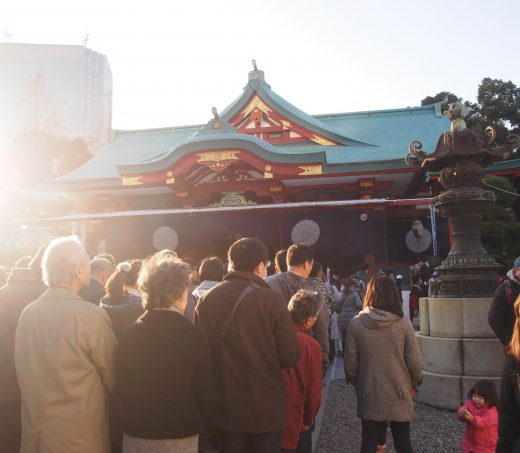
There was also shrine maiden Miko who was performing religious service of Shinto.
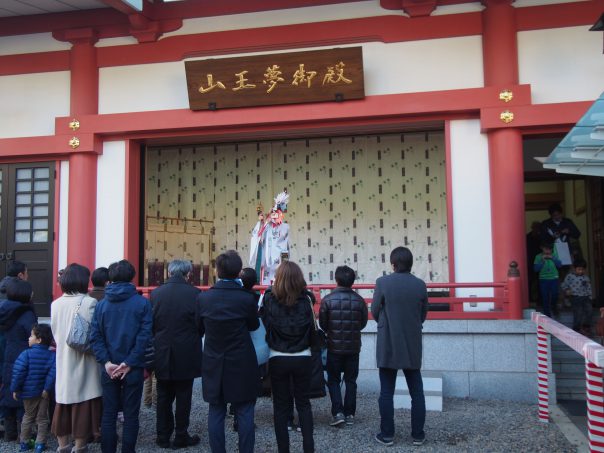
I went back down the steps.
I like the atmosphere and the location of this shrine that I come back here again to see it in quiet atmosphere.
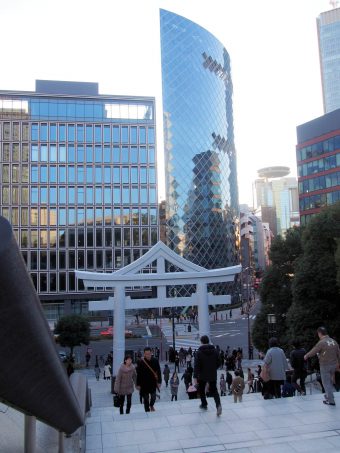
Meiji Jingu in Harajuku
Final shrine is Meiji Jingu.
The scene of people visiting Meiji Jingu has often aired on TV.
And it is very convenient as it is about less than 5 minutes from Harajuku station to the first shrine gate of Meiji Jingu.
I sometimes came to Meiji Jingu but this is my first time to visit the shrine in New Year.
This is the first gate of Meiji Jingu and it takes time to the main shrine.
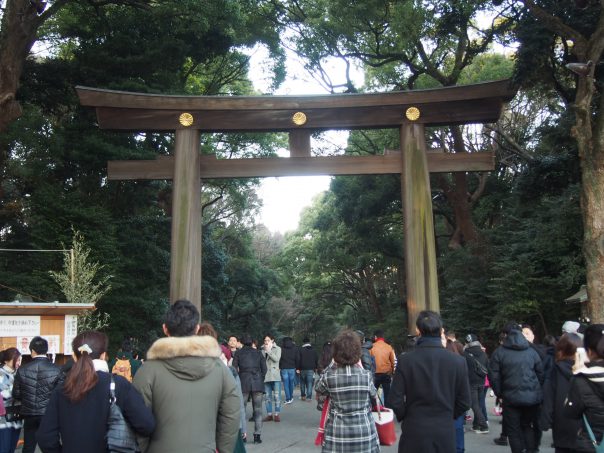
I think I walked for about 15 minutes.
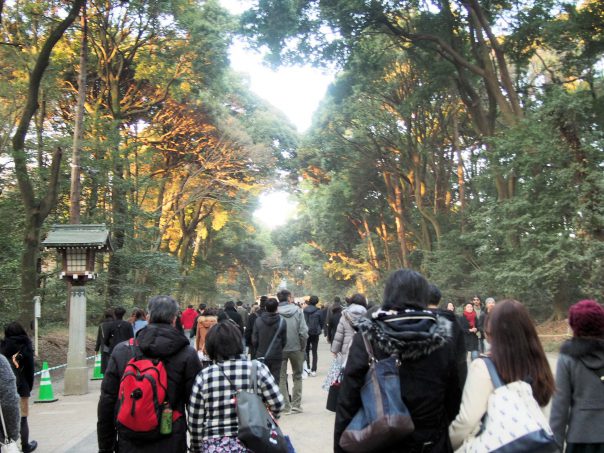
Finally I could see the main shrine behind the gate.
I like the atmosphere of Meiji Jingu.
And this time I lined up rather I couldn’t move forward without joining the line.
Certainly this was the busiest shrine.
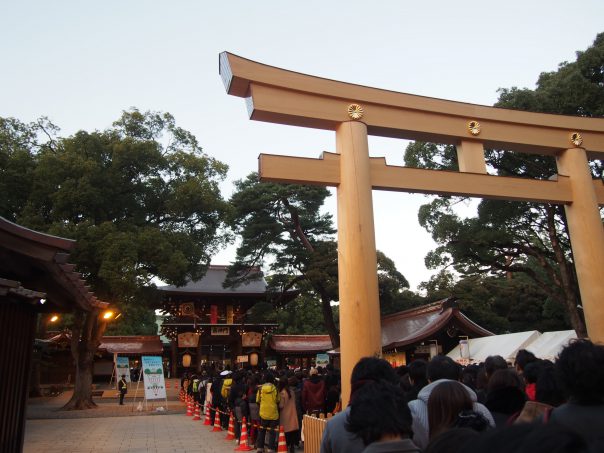
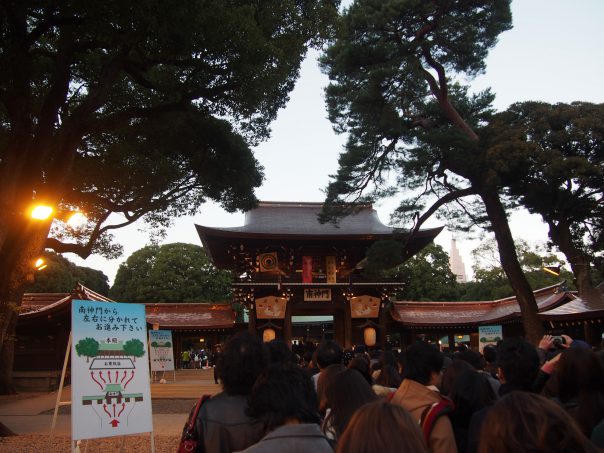

Finally got to the main shrine!
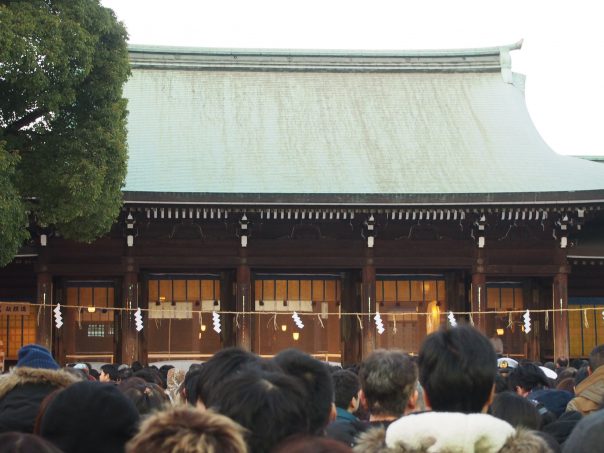
Some people throwing coin from behind as it is hard to come to the front.
By the way, the reason people throwing coin is to receive grace of Shinto deity and pray for one’s wish.
But original meaning of it was opposite, that is to say, saying thanks for the Shinto deity did for us and people offered silver, gold, rice, etc. in the old days.
People showed their appreciation by offering important things to the Shinto deity.
Nowadays people throwing usually 5 yen as it can also be read as “Go En”.
En means bonds, connection, link and Go En is polite way of En.
So most people throwing coin of 5 yen wishing for a connection with good people and good things.
Actually I rarely throwing coin or wish anything but I threw coin just for donating money to shrine for taking picture of all these shrines today.
What I threw was actually 10 yen coin as I didn’t have 5 yen coin at the time.
And I knew afterwards that the coin of 10 yen is not good as it can be read as To En.
“To” is read “far” in Japanese and Far En means far from a good bonds and a connection!
I didn’t know that!! T T
I wouldn’t have recovered from the shock whole this year if I was a religious person.
Exit of the gate of the side.
It was getting dark but it was good that I managed to visit all the shrines before twilight.
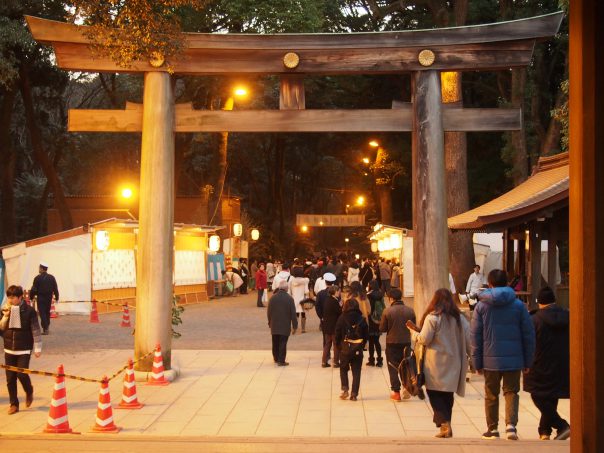
There was a place where you can buy things that related Shinto and consult the divine oracle.
Shrine maiden Miko was handling it.

It looks like not near Harajuku station here.
But I like the atmosphere of Meiji Jingu holds.

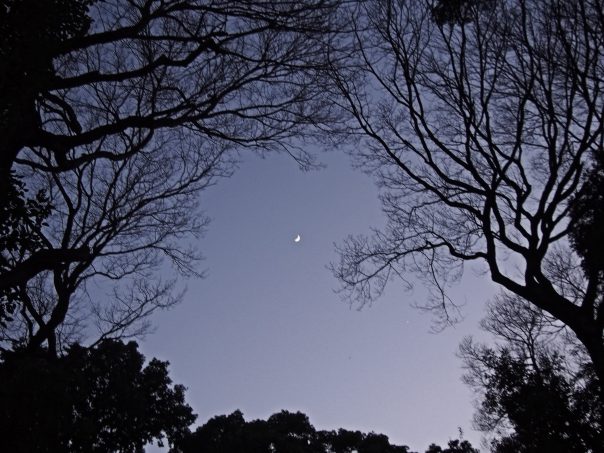
Summary
Actually I rarely do Hatsumoude, I don’t remember when was the last, maybe junior high?
So may be this was the first time more than in 20 years.
It is not like I don’t like Hatsumoude rather I like the atmosphere of it but I just prefer to pass the time quietly at home.
I recommend you to do Hatsumoude if you come visit Japan at the end or at the start of the year.
You can really feel and touch Japanese culture.
Don’t throw 10 yen coin like me at the time ^ ^ ;
Every year many things happen and time really fries but what I do is just to do my best everyday to enjoy my life and not regret the past at the end of the year or at the end of the life.
Wish the whole world changes for the better!
New Year’s Eve Omisoka in Japan
Oshougatsu : How Japanese Celebrate New Year
Japanese New Year Post card Nengajo! Dog’s Year 2018!
